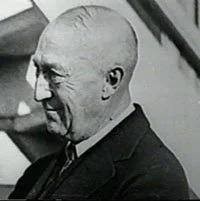In 1808, the United States outlawed the importation of slaves, ending nearly two hundred years of forcefully shipping people across the Atlantic from Africa. Okay, maybe it didn’t completely stop the trade, what with Brazil and several islands in the Caribbean continuing to import slaves for decades, but at least in the United States the practice stopped. Well, at least it stopped being done legally. You know what, we’re not going to get anywhere if we get stuck now, so let’s just keep going forward with what we got. Anyways, though the international slave trade was made illegal, the trading of slaves already in the United States remained perfectly acceptable, at least up until the Civil War, but hopefully you already know how that whole shindig turned out.
The time following the Revolutionary War in the United States was a time of enlightenment, at least for some. Thanks to the rise of hardcore religious groups, which took a rather negative view of the whole slavery thing, the practice of literally owning people was beginning to look less and less like a good thing. By the time 1808 rolled around, all of the northern states had outlawed slavery, and it had become at least somewhat common for many slave owners to free their slaves upon their death, the slave owner’s death that is. As a result, the U.S. was becoming home to an increasingly large number of free black people. This of course caused problems, by which I mean a bunch of asshats created a problem out of nothing. You see, though the abolitionists of the day were totally down with getting rid of slavery, they weren’t so down with former slaves living amongst them. Proving that racist ideas just don’t change that much, it was claimed that Blacks were mentally inferior savages who had no business mixing and intermingling with the majority white population. Of course, what was anybody supposed to do about it? It wasn’t like they could just ship all the freed Black people back to Africa. Oh…..wait……that’s exactly what they decided to do.
In 1815, a strange coalition of racist abolitionists, slave owners who really didn’t want their slaves noticing that people with the same skin color were walking around free, and free Black people who were just plain sick of getting treated like shit for no good reason, formed the American Colonization Society (ACS). Together, they began working to establish a new country in west Africa, a country that would later become known as Liberia. Though it sounds crazy today, the idea was widely seen at the time as being the best way to handle things. Even good old Honest Abe Lincoln was a major proponent.
Things of course started out all sorts of fucked up. The first thing the ACS needed to do was to buy some land. Luckily, they got a great deal after using the tried and true negotiation tactic of putting a gun to the local chief’s head. Colonists began to show up soon after, some 4,500 over the next two decades. These colonists did not have the easiest of times. For one thing, for some reason the local tribes weren’t really down with a bunch of total strangers just suddenly appearing and declaring that a big chunk of land belonged to them now. For another, most of the immigrants were several generations removed from their ancestors, meaning that they lacked immunity to the tropical diseases of their ancestral homelands. Between these two factors, around 60 percent or so died. Despite this horrible loss of life, the ACS, which was completely aware of it, just kept shipping more people over, reaching some 15,000 by the start of the Civil War.
In 1847, the Black immigrants formed their own country, naming it Liberia because it kind of sounded like liberty, and forming a government based upon that of the United States. Unfortunately, this involved treating anyone different like shit. The Black immigrants generally viewed the local tribesman as a bunch of filthy savages, and thus refused to grant them citizenship. This didn’t change until 1904, though in the mean time they did create a myriad of programs to promote assimilation, by which I mean they forced people to change under the threat of violence. The immigrants also enslaved many of the local tribespeople, a practice that didn’t end until the 1930’s.
After the U.S. Civil War, the number of African-Americans willing to immigrate to Liberia dropped significantly. As a result, the ACS folded soon after and the idea of avoiding racial assimilation by shipping all the Black people back to Africa died with it. Actually, just kidding, the idea remained politically relevant throughout the early twentieth century, even gaining widespread traction again in the 1920’s thanks to Marcus Garvey, a Jamaican born Black nationalist and leader of the Pan-Africanism Movement. The ACS remained an active organization until 1964.
Image: https://en.wikipedia.org/wiki/Great_Stork_Derby#/media/File:Charles_Vance_Millar.jpg



